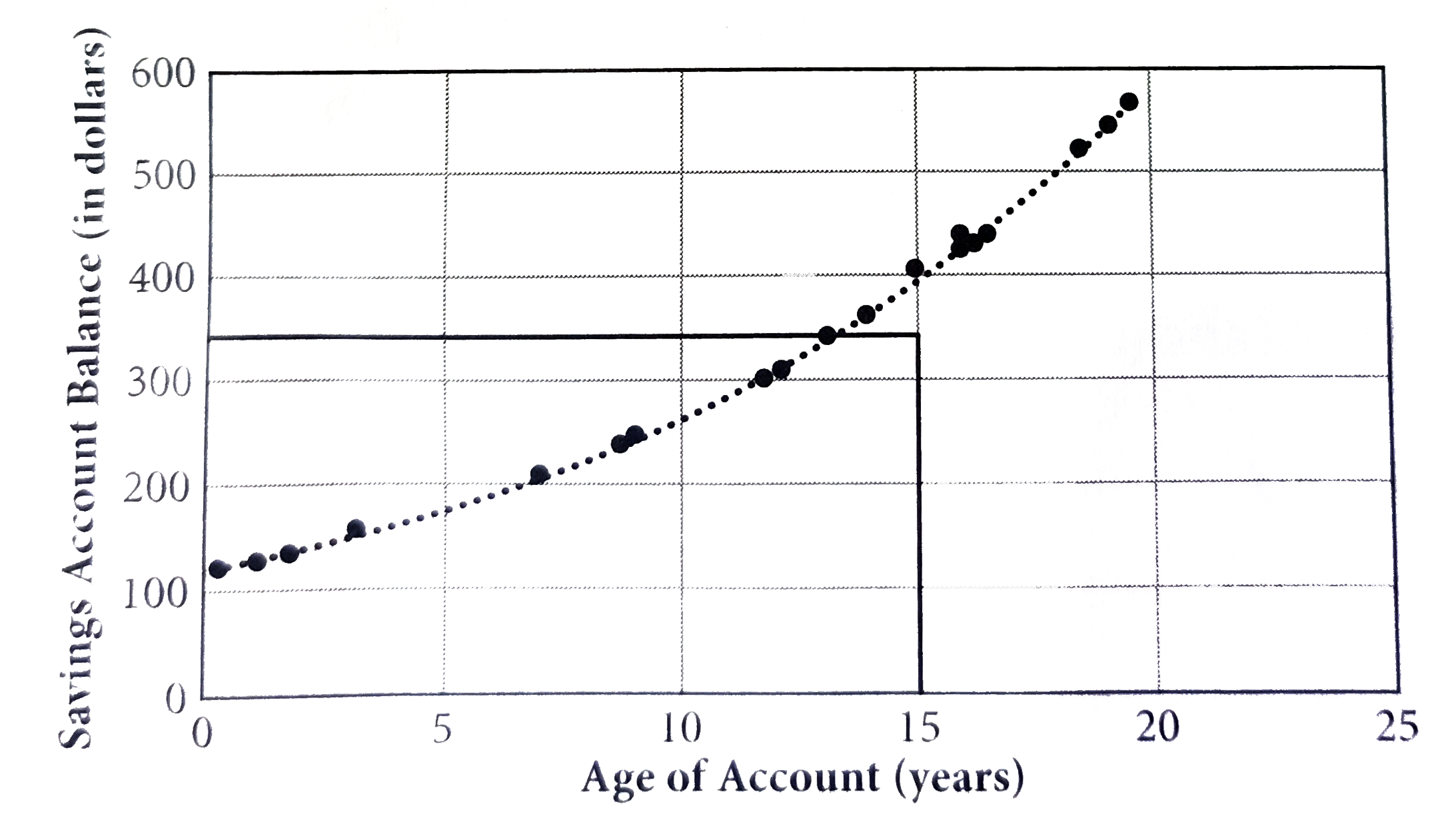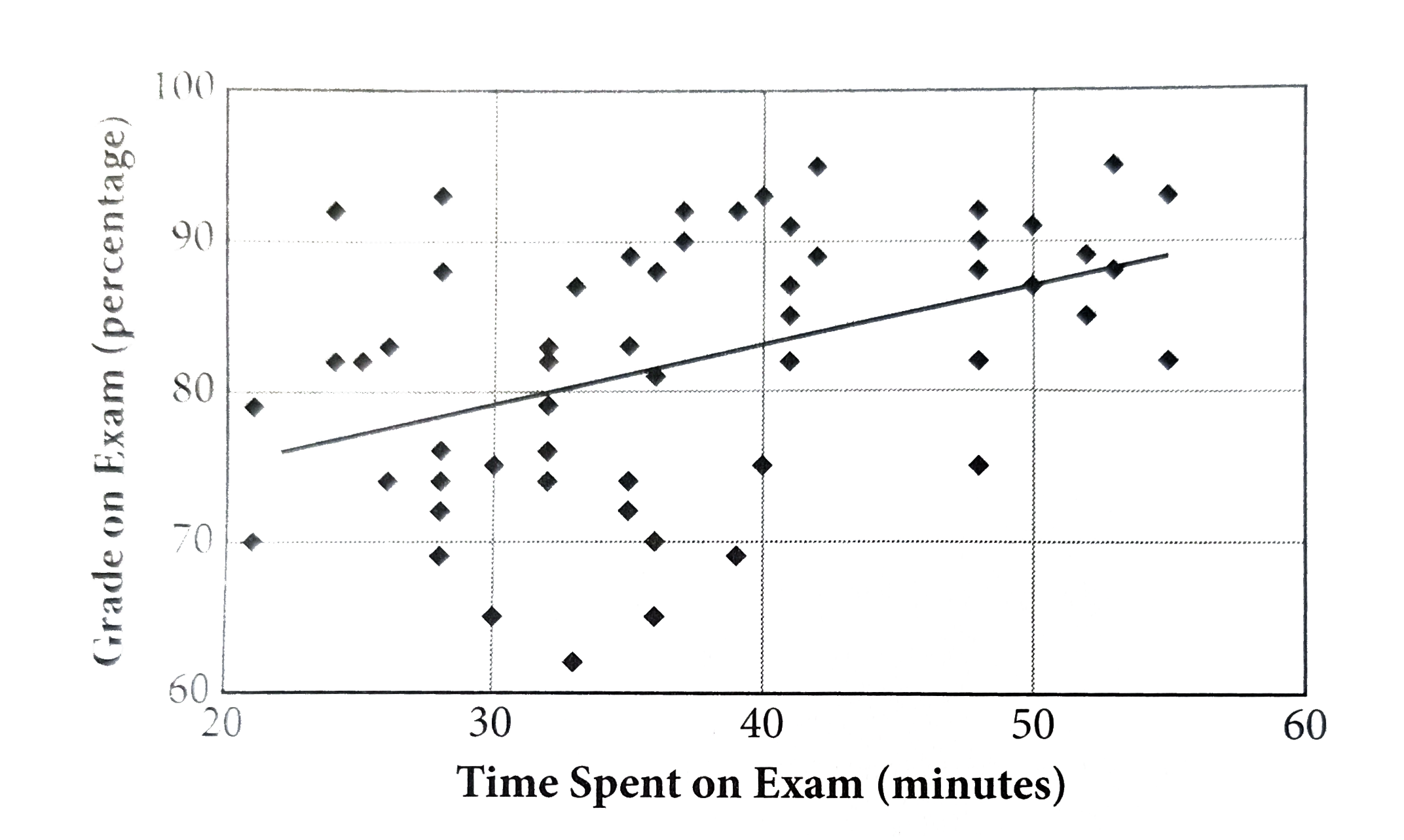Student in a finance class surveyed 20 percent of the account holders at Docven Bank to determine whether the bank's "Stock Market Special" savings account actually paid account holders the promised 10 percent annual interest rate. The scatterplot above shows the data the students collected from account holders about how long ago they opened their accounts and their current balances. The students calculated a lone of best fit with the equation y=120(1+.0812)12x, whihc means that the bank was actually paying account holders only an 8 percent annual interest rate. Which of the following best explains how the number 120 in the equation relates to the scatterplot?
A "Stock Market Special" account with $120 initially will likely have less than $350 after 15 years.
All "Stock Market Special" accounts started with a $120 initial investment.
The difference between the promised 10 percent annual interest rate and the actual 8 percent rate is $120 a year.
A "Stock Market Special" account with $120 initially will likely have more than $350 after 15 years.
The correct Answer is:D
In the line of best fit equation that the students calculated, the initial principal is $120, but that does not necessarily mean that all of the account holders had that much in the account initially. Eliminate (B).
To test (A) and (D), sketch in the line of best fit:

Notice that the line of best fit, which is based on an initial principal of $120, is definitely above $350 at the 15 year mark, so (D) is correct. Since the line of best fit is exponential, not linear, there will not be a consistent difference between the 10 percent annual rate and 8 percent annual rate, which makes (C ) incorrect.
Topper's Solved these Questions
- SCATTERPLOTSBOOK - KAPLANCHAPTER - SCATTERPLOTSEXERCISE - LINE OF BEST FIT
1 Videos
- SCATTERPLOTSBOOK - KAPLANCHAPTER - SCATTERPLOTSEXERCISE - SCATTERPLOT MODELING
1 Videos
- SCATTERPLOTSBOOK - KAPLANCHAPTER - SCATTERPLOTSEXERCISE - SCATTERPLOT MODELING
1 Videos
- SAT MATH: TIMING ANS SECTION MANAGEMENT STRATEGIESBOOK - KAPLANCHAPTER - SAT MATH: TIMING ANS SECTION MANAGEMENT STRATEGIESEXERCISE - TRY ON YOU OWN
5 Videos
- SYSTEMS OF LINEAR EQUATIONSBOOK - KAPLANCHAPTER - SYSTEMS OF LINEAR EQUATIONSEXERCISE - NUMBER OF POSSIBLE SOLUTIONS
1 Videos
Similar Questions
Knowledge Check

A physicas professor presented the scatterplot above to her first-year students. What is the significance of the slope of the line of best fit ?AThe slope represents the rate at which time spent on an exam increases based on a student's exam performance.BThe slope represents the average grade on the exam.CThe slope represents the rate at which a student's exam grade increases based on time spent on the exam.DThe slope has no significance.
The scatterplot above shows data for ten accounts opened by a company , along with the line of best fit. For the account that contains the least amount of money, which of the following is closest to the difference of the actual amount and the amount predicted by the line of best fit?A200B500C900D1200An annual interest rate of 5 percent is paid to a CD (certificate of deposit) account. If the account now had a balance of $420.00, what was the balance of the account before the annual interest was paid?
A375B393.85C400D419.85
How do you account for the following:
Tail of comets
View SolutionHow do you account for the miscibility of ethoxyethane with water?
View SolutionSasha invested $1,200 in a savings account at an annual interest rate of 1.6% compounded annually. She made no further deposits or withdrawals. To the nearest dollar, how much more money did she have in the account after 3 years than after 2 years?
View SolutionBecca deposits $100 into a bank account that earns an annual interest rate of 4%. If she does not make any additional deposits and makes no withdrawals, how long will it take her, in years, to increase the value of her account by at least 60%?
View SolutionBecca deposites $100 into a bank account that earns an annual interest rate of 4% . If she does not make any additional deposits and makes no withdrawals how long will it take her, in year, to increase the value of her account by at least 60%?
View Solution
